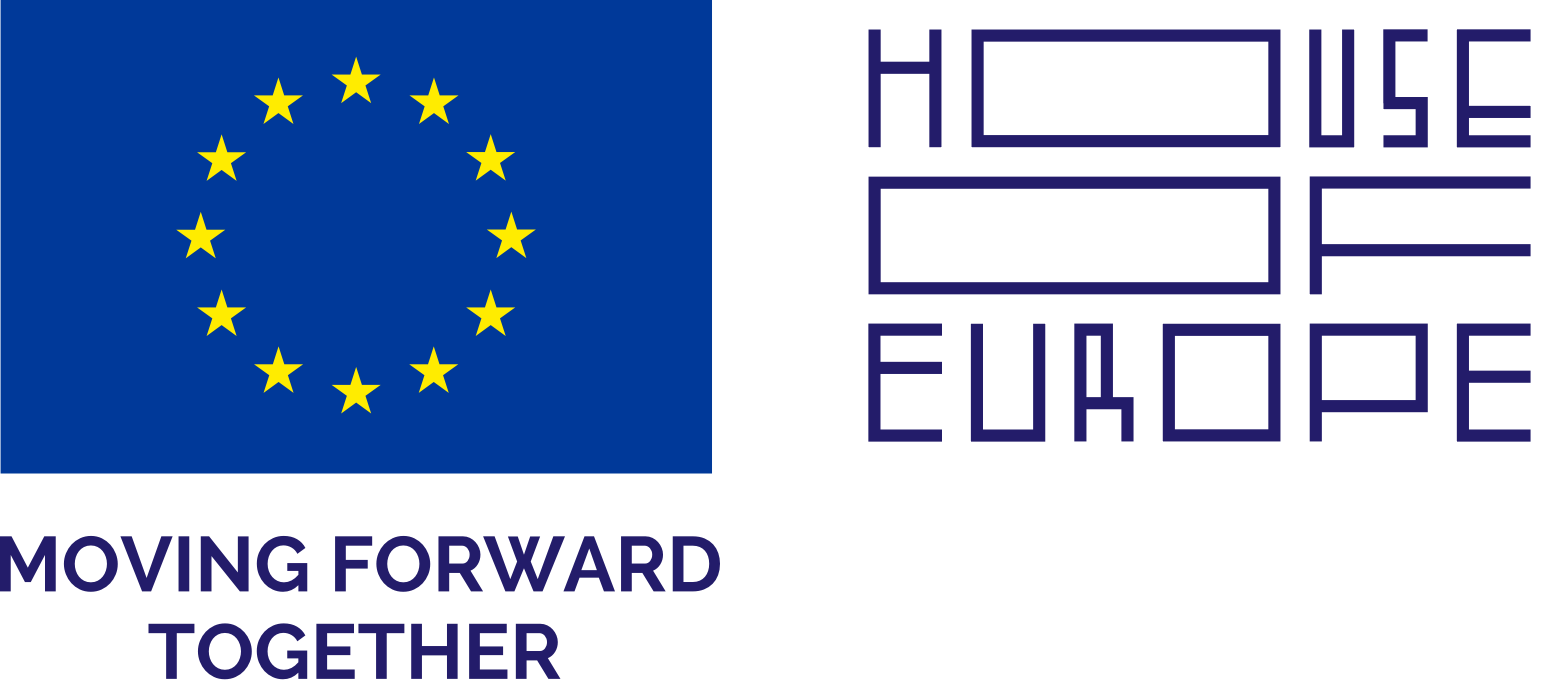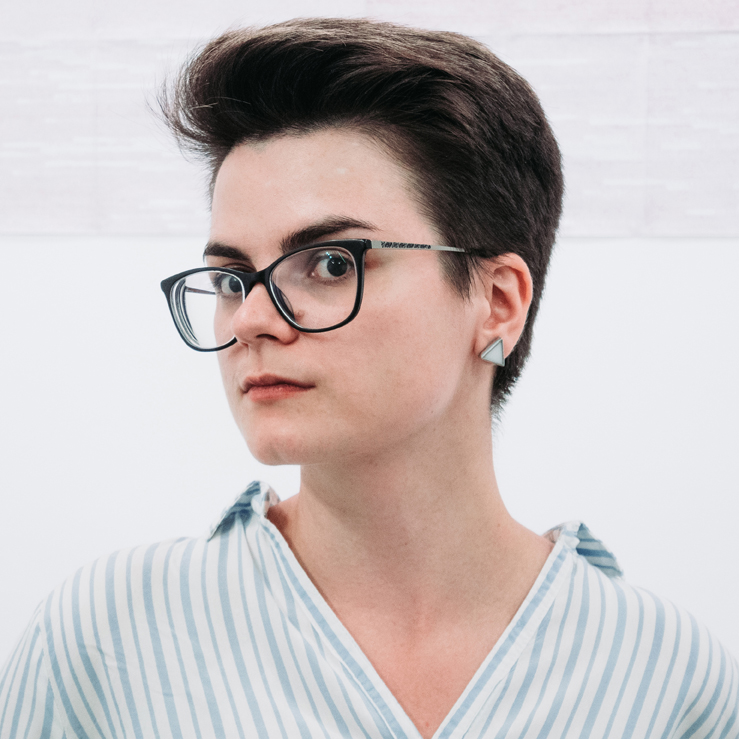

– born in 1994 in Kharkiv. A multidisciplinary concept artist who works with performance, photography, video, and text. In 2016, she graduated from Kharkiv State Academy of Design and Fine Arts. Finalist of “Non Stop Media VIII” Contemporary Art Festival (Kharkiv, 2016); Nathan Altman Contemporary Visual Art Contest finalist (Vinnytsia, 2016) and winner (Vinnytsia, 2017); MUHi (Young Ukrainian Artists) finalist (Kyiv, 2017), Second Biennale of Ukraine’s Young Art finalist (Kharkiv, 2019). Had solo exhibitions in Kharkiv, Kyiv, Dnipro, Odesa, Ivano-Frankivsk and Turin (Italy). Participated in art residencies, group exhibitions and projects in Ukraine, Poland, Germany, Austria, Great Britain, Spain, Argentina, Japan and the USA. Since summer 2022 temporary lives and works in Graz, Austria.
I work with meanings and connotations by studying the mechanics and the issues of their (trans)formation through performative intervention practices, observation, and writing.
My work is focused on research and interaction with the environment being a semantic space. There, I look for and unveil the gaps – points of uncertainty and “volatility” of a language, its misunderstandings, and miscommunications. Gently interfering with the space, I observe how it welcomes my presence (or not) and how it changes because of it, how the perception of this space is changed due to my actions. My own body, temporary objects or text messages that I place inside become, therefore, triggers for the meaning formation, and couriers for interpretations and connections between the space and a viewer. At the same time, I dash the viewer’s hopes and traditional interpretations of what they see, shifting their focus onto the space itself. Therefore, I replace the question “What is going on?” with “Why does everything that is happening seem strange to me? And what exactly do I see as strange and why?”. For example, within the project Studies of Nothing1 I conducted a series of performative interventions into the natural landscape with the actions that caused a sense of insanity, “wrongdoing” and inconsistency. In that way, I tried to make this context visible and question its “normality” – on one hand, and supply it with new meanings – on the other.
Apart from that, it is interesting for me to explore the phenomena of meaning-making and “naming” things as a certain form of manifestation of human power over the components of the surrounding world, their conquest and “colonization”. Can we assume that by revealing the absurdity and insanity of these human-made meanings, nature and space partially regain their independence? And can the recognition of the fundamental unknowability of the world be a certain act of liberation for a human being? Or is it impossible to abandon interpretations? Is the constant search for meaning what actually defines a human? These questions, among other things, were asked by me within the project Off-road signs2. There, on the off-road terrains, I placed metal signs made according to the standards of real road signs, but with my own texts. The aim was to emphasize the absurdity of the entire action of a space’s “designation”.
In addition to working with the environment and performative interventions, I engage in writing as a physical, meditative and (self) therapeutic practice. Through writing I seek to fill meaningful voids, speaking out where it is a common practice to remain silent. When writing about what worries or upsets me, when sharing my personal fears and doubts, I encourage other people to break their own silence and start communicating. So, in the project Keep it to yourself, tell no one3 I was documenting confessions on the wall in charcoal that I did not allow myself to do for a long time, and wiping them away with a hand, so that there were black marks reminiscent of wounds. In that way, I visualized how dangerous and painful non-speaking and non-discussing can be, and how important communication is – to hear others and to be heard, and most importantly, to hear yourself.
After 24.02.2022 when Russia launched a full-scale war against Ukraine, I had to re-focus my practice so that I could contribute to the informational and cultural resistance of my country. Thus I began to apply my writing skills in the spheres of journalism and (art)activism, but also as means of (visual) poetry. Like, for example, in the series “Tablets of Rage”4 that I created while hiding in a basement shelter in the sieged Kharkiv, using old bed linen as my only available canvases. Or in the series “Anger Exercises”5 which I started right when Russia began to massively bomb Ukrainian civilian infrastructure in the autumn 2022. Using words as a weapon, powered with the energy of love and rage, I aimed to raise the world’s awareness about Russian imperialism, to make Ukrainian voices loud and heard.
At the same time, I draw parallels between colonialism in the global economy and (geo)politics and gender-based oppression in social and human relationships. As both of them are deeply rooted in patriarchy and both are using similar practices of control and domination. From the perspective and experience of a Ukrainian, of a woman, and of a Ukrainian woman in the times of war, in my art I speak out on the topics of freedom, resistance, solidarity and fight, erasing the boundaries between the personal and the political.
Finally, apart from my writing practices and activism, I am searching for new means and approaches in my work with the environments. Using them, I reflect on my status as a war refugee, on the ideas of home and belonging, and on my grief and fading memories about the landscapes of Ukraine which have been changed by the war forever6.
The text was written in collaboration with Iryna Polikarchuk (2022).
1Image:Olia Fedorova, Studies of Nothing, 2020-..., performative intervention, photo. See:oliafedorova.com/works/studies-of-nothing. Courtesy of the artist.2Images:Olia Fedorova, Off-road signs, 2021, intervention, photo. See:oliafedorova.com/works/off-road-signs. Courtesy of the artist.
3Olia Fedorova, Keep it to yourself, tell no one, 2020, text in space, video. See: oliafedorova.com/works/keep-to-yourself. Courtesy of the artist.
4Image: Olia Fedorova, Tablets of Rage, 2022, handwriting on the textile. See: oliafedorova.com/works/tablets-of-rage. Courtesy of the artist.
5Image: Olia Fedorova, Anger Exercises, 2022-2023, ink on paper. See: oliafedorova.com/works/anger-exercises. Courtesy of the artist.
6Image: Olia Fedorova, The garden that didn’t happen, 2023, video, installation made of apricot stones. See: oliafedorova.com/works/garden-that-didnt-happen. Courtesy of the artist.

– народилась 1994 року у Харківі. Мультидисциплінарна концептуальна художниця, що працює із перформансом, фотографією відео та текстом. Закінчила Харківську академію дизайну та мистецтв у 2016 році. Лауреатка фестивалю сучасного мистецтва «Non Stop Media VIII» (Харків, 2016); фіналістка (2016) та переможниця (2017) конкурсу сучасного візуального мистецтва ім. Натана Альтмана (Вінниця); фіналістка конкурсу молодих художників МУХІ 2017 (Київ); фіналістка Другої Бієнале молодого мистецтва України (Харків, 2019). Мала персональні виставки у Харкові, Києві, Дніпрі, Одесі, Івано-Франківську та Торіно (Італія). Брала участь у резиденціях і колективних виставках та проєктах в Україні, Польщі, Німеччині, Австрії, Великій Британії, Іспанії, Аргентині, Японії та США. З літа 2022 року тимчасово живе і практикує у місті Грац, Австрія.
Моя робота сфокусована на дослідженні та взаємодії з середовищем як із семантичним простором. У ньому я шукаю і проявляю порожнечі – точки непевності та «хиткості» мови, непорозуміння та дискомунікації. М’яко втручаючись у простір, я спостерігаю, як він приймає (чи не приймає) мою присутність, як змінюється через неї та як трансформується сприйняття цього простору завдяки моїм діям. Моє власне тіло, тимчасові об’єкти та текстові повідомлення, які я розміщую y просторі, стають таким чином тригерами утворення сенсів, провідниками інтерпретацій та конотацій між простором та глядачем. У той же час, я ламаю очікування глядача та його/її звичне бачення простору, зміщуючи фокус уваги глядача на саме середовище. Таким чином, питання «Що відбувається?» замінюється на «Чому те, що відбувається, здається мені чимось дивним? І що саме тоді я вважаю нормальним та чому?». Наприклад, у проєкті Studies of Nothing1 я здійснила серію перформативних втручань у природний ландшафт діями, які у його звичному контексті викликають відчуття безглуздості, «неправильності», невідповідності. Так я прагнула, з одного боку, зробити цей контекст видимим і поставити під питання його «звичність», а з іншого – наситити його новими сенсами.
Також мені цікаво досліджувати явища сенсоутворення та «називання» речей як певну форму маніфестації влади людини над феноменами навколишнього світу, їхнього підкорення, «колонізації». Чи можна вважати, що виявляючи абсурдність та безглуздість цих призначених людиною сенсів, природа, простір, космос – частково відвойовують свою незалежність? І чи може бути певним актом вивільнення для самої людини визнання принципової непізнаваності світу – чи відмова від інтерпретації неможлива, а постійний пошук сенсу і є тим, що робить людину людиною? Ці питання, серед іншого, я поставила у проєкті Off-road signs2, у якому я розміщувала серед бездоріжжя металеві знаки, вироблені за стандартами реальних дорожних знаків – проте з моїми власними текстами, що мали на меті закцентувати безглуздість самого акту «означування» простору.
Окрім роботи із середовищем та перформативними інтервенціями, я займаюсь писанням (writing) як тілесною, медитаційною та (само)терапевтичною практикою, через яку я прагну до заповнення сенсових порожнеч, висловлюючись там, де зазвичай прийнято мовчати. Пишучи про те, що непокоїть чи засмучує мене, ділючись моїми особистими страхами та сумнівами, я закликаю інших людей порушити власне мовчання та розпочати комунікацію. Так, у проєкті Тримай в собі, не кажи нікому3 я записувала вугіллям на стіні зізнання, які довго не наважувалась зробити – і рукою стирала написане, так що на поверхні залишались чорні сліди, схожі на рани. Таким чином, я візуалізувала, наскільки небезпечним та болісним може бути непроговорення, невисловлення, і наскільки важливою є комунікація – почути іншого та бути почутою, та найголовніше, почути саму себе.
Після 24 лютого 2022 року, коли Росія розпочала повномасштабне вторгнення в Україну, мені довелося змістити фокус моєї роботи на практиках, що дали б мені змогу робити внесок в інформаційний та культурний спротив моєї країни. Так я почала застосовувати свій досвід роботи з текстами у сферах журналістики та (арт)активізму, а свої методики писання – як засоби складання (візуально)поетичних творів. Як, наприклад, у серії “Скрижалі Люті”4, що я створювала під час перебування у бомбосховищі оточеного російськими військами Харкова навесні 2022 року, маючи в якості полотен лише стару постільну білизну. Або в серії “Вправи з гніву”5, яку я розпочала як реакцію на масштабні обстріли Росією цивільної інфраструктури України восени 2022 року. Використовуючи слова як зброю, заряджену силою любові та люті, я прагну доносити світові правду про російський імперіалізм, а також допомагати бути почутими іншим українським голосам.
У той же час я проводжу паралелі між колоніалізмом у глобальній економіці й (гео)політиці та проблемами нерівності та дискримінації у соціальних та міжлюдських відносинах – як явищами, що однаково породжені патріархальним устроєм, і в яких до пригноблюваних груп застосовуються схожі практики домінування та контролю. Як українка, як жінка, і як українська жінка в часи війни, через своє мистецтво я висловлююсь на теми свободи та спротиву, солідарності й боротьби, стираючи кордони між особистим та політичним.
Нарешті, окрім практик писання та активізму, наразі я шукаю нові засоби та методики роботи з простором і середовищем. Через них я опрацьовую такі теми як мій статус біженки за кордоном, моє розуміння понять “дому” та “приналежності”, яке безперечно зазнало змін після вимушеної евакуації, а також мій сум та спогади про простори рідної країни, що їх також, як фізично, так і змістовно, назавжди змінила повномасштабна війна6.
Текст написано у співпраці з кураторкою Іриною Полікарчук (2022).
1Image: Оля Федорова, Studies of Nothing, 2020 - …, перформативна інтервенція, фото. Дивись: oliafedorova.com/works/studies-of-nothing.Надано художницею.2Зображення: Оля Федорова, Off-road signs, 2021, інтервенція, фото. Дивись: oliafedorova.com/works/off-road-signs. Надано художницею.
3Оля Федорова, Тримай в собі, не кажи нікому, 2020, текст в просторі, відео. Дивись: oliafedorova.com/works/keep-to-yourself. Надано художницею.
4Зображення: Оля Федорова, Скрижалі Люті, 2022, рукопис на текстилі. Дивись: oliafedorova.com/works/tablets-of-rage. Надано художницею.
5Зображення: Olia Fedorova, Anger Exercises, 2022-2023, ink on paper.Оля Федорова, Вправи з гніву, 2022-2023, папір, маркер. Дивись: oliafedorova.com/works/anger-exercises. Надано художницею.
6Зображення: Оля Федорова, Сад, якого не було, 2023, відео, інсталяція з кісточок плодових дерев. Дивись: oliafedorova.com/works/garden-that-didnt-happen. Courtesy of the artist.
